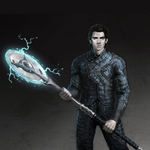There are a number of different space warfare games. Some are purely strategic, like the Traveller-based Fifth Frontier War, or a mix, like the Starfire system used to inspire several of David Weber's non-Honor Harrington books. Others are very tactical. Take Star Fleet Battles, or Talon.
Not many were realistic. Sure, SFB could get as insanely detailed as a game of Harpoon, but it was still warp drives and swooping spaceships. Very little captured the freedom of motion of fighters in Babylon 5, though several games like Mayday, (also Traveller-based) and Triplanetary (I reviewed it and covered navigation) tried to at least incorporate vector movement. Others like Renegade Legion: Interceptor and SFB/Federation Commander tried to incorporate detailed systems damage, something that Talon did a nice job of abstracting.
An outlier for both its systems complexity and also for being the only game at its introduction I'm aware of incorporating true 3D vector movement, is Attack Vector: Tactical, by Ad Astra games, courtesy of Ken Burnside. It operated in a hard-science universe with detailed damage and movement, and more importantly, a revolutionary and playable (relatively) way of recording and plotting that movement.
Thence came, based on the same system, Saganami Island Tactical Simulator, set in David Weber's Honor Harrington universe. And eventually, Ken created, using the same building blocks, Squadron Strike, tagged as "Any ship, any universe, fully 3D."
This brought about several other boxed sets based on the SS rules, and finally, these last couple months, the long-delayed (due to moves, etc.) Squadron Strike: Traveller shipped. Anyone familiar with canonical classic Traveller of the LBB era will immediately recognize some of the designs as all of the Imperial designs, such as the Planckwell, are out of Supplement 09, Fighting Ships. All of them are on the heavier side with destroyers such as the 5000-ton P.F. Sloan class and light cruisers at the bottom of the tonnage range.
So. How do we show true 3D movement and attitude on a 2D hex map?
The spaceships are small boxes you assemble, a trick I believe I first saw in RL:I and it's capital ship followon Leviathan.

Glue works well, and they sell additional stiffeners. A small bearing or several small washers are useful for weighting the box, because for attitude representation? Tilt blocks.
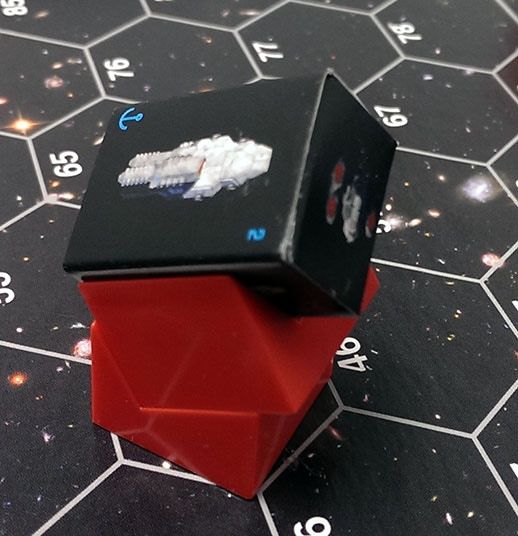
Relative elevation uses small, nearly flat, white and inserts that go below the blocks, with a black one indicating negative elevation.
Damage is handled by splitting the systems across ten hit locations, with one being at the front and ten at the read (and rear-angle shots treat a "1" location as a ten).
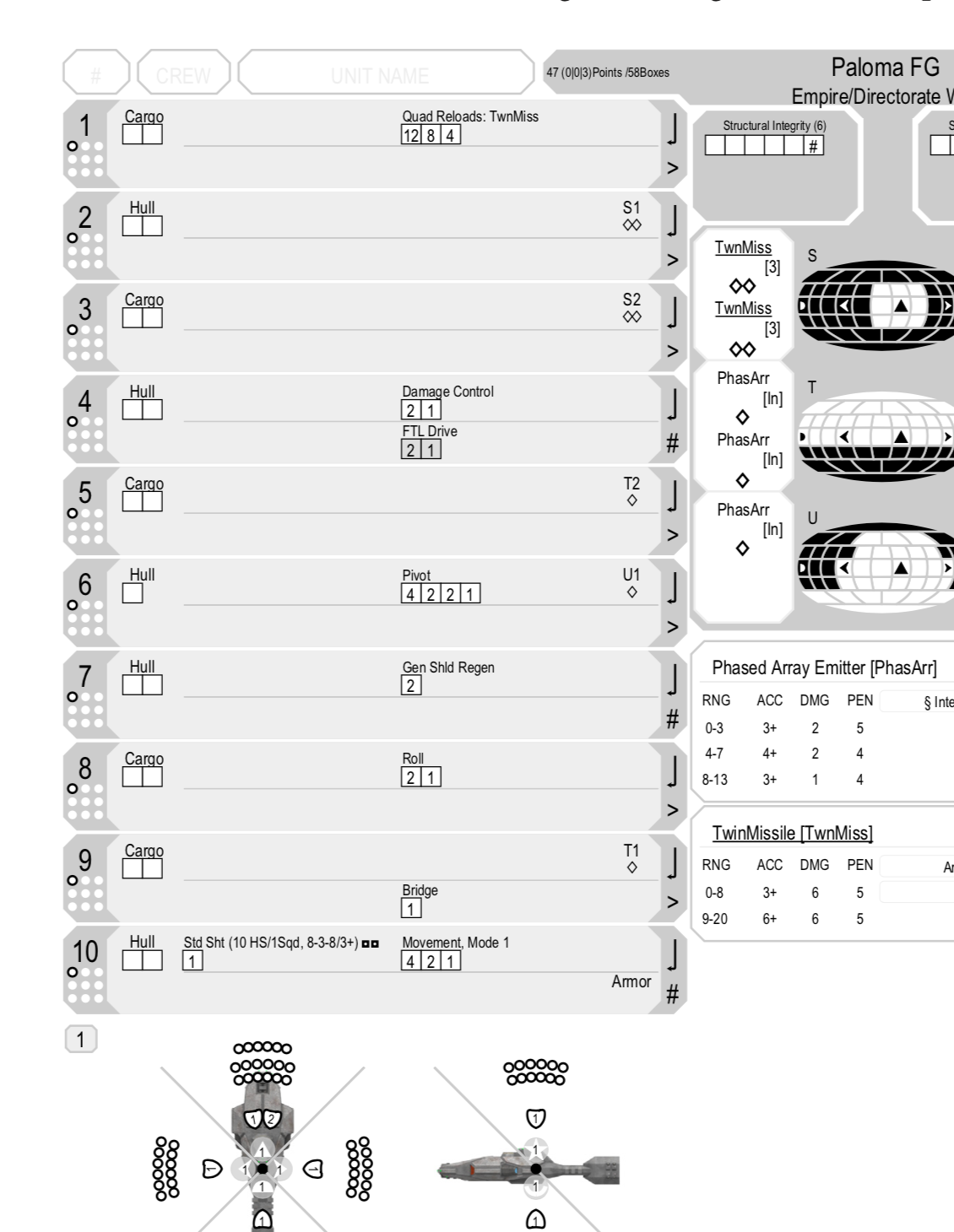
Depending on factors like "blowthrough" and "bursting", damage will spread to adjacent areas, then impact the structure of the ship. For ecample a hit in location 3 will destroy a cargo module, a weapons mount, then continue to the second line of location three, then follow the ">" to location four, destroy a hull block, a damage control block, an FTL block, and continue on to structural damage.
Nice, abstract, simple, with some variations due to weapons effects. For example, the Imperial particle beam on the Sloan class damages up to two boxes in a system before continuing on.
The ship sillhouette below outlines what degree of shielding/protective coverage is available up, down, left, right, etc.
The real genius is the "AVID" display, or orientation card. Treat it like an artificial horizon in an airplane cockpit - it shows you the orientation on all three axes of a ship relative to the game board, in 30-degree increments (yes, the game uses hex corners), with some approximation. It also has spaces around the central "sphere" to mark vectors along any hexside.
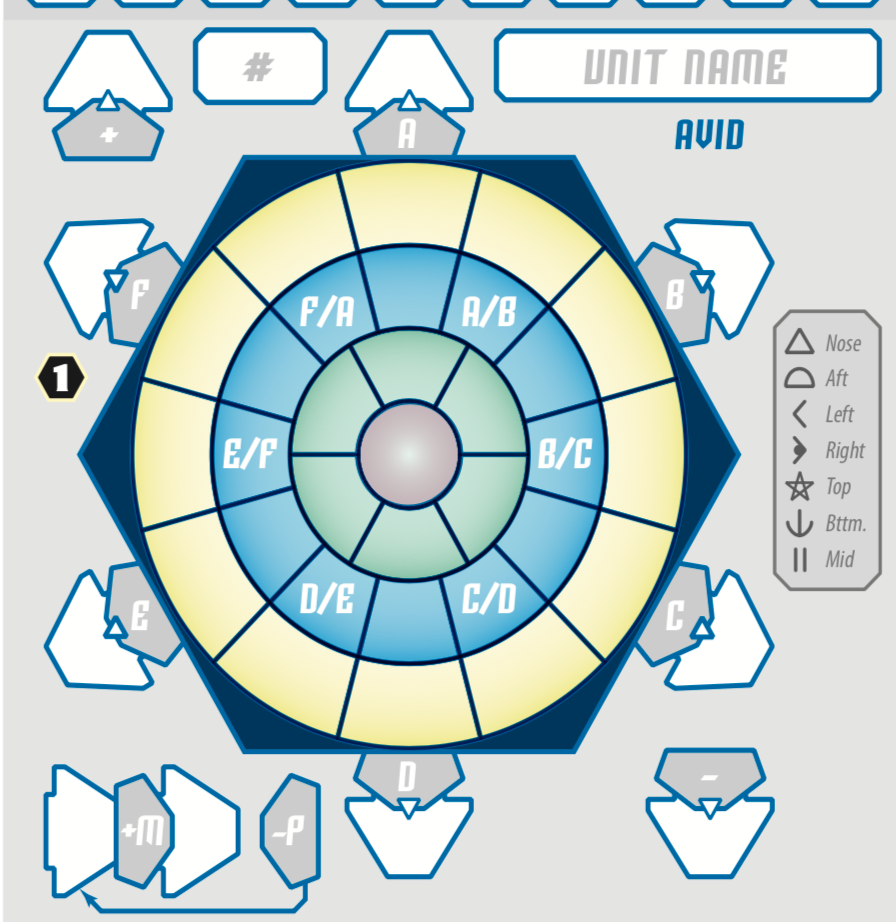
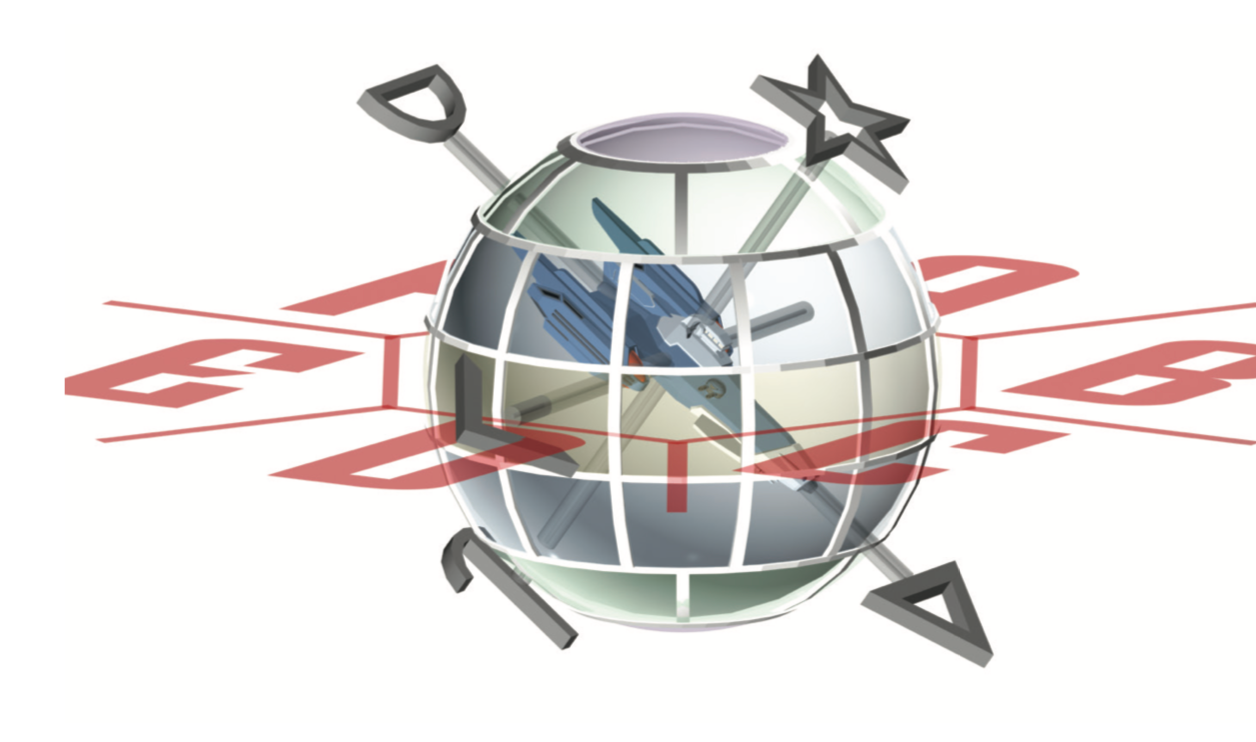
With a little practice, you can look at markings on the AVID and mentally translate them to the image of the ship above. The amber spaces represent 30-degree arcs roughly level with the play mat. The blue spaces represent 30 degrees up or down from level, with the end of any axis pointing "down" being circled. Green is 60 degrees up or down, and the different shape a result of the approximations made to make this simple. Finally, the purple circles represent a roughly 30 degree patch directly above or below the ship. The fore-aft axis has an arrow and a half-moon (think "engine"). The port-starboard (left-right) axis two arrows, with the right arrow on teh diagram being filled with a circle. The vertical axis has a star for the ventral "up" direction, and an anchor for the "down" keel direction.
For example. Let's take a Sloan-class ship, facing "A".
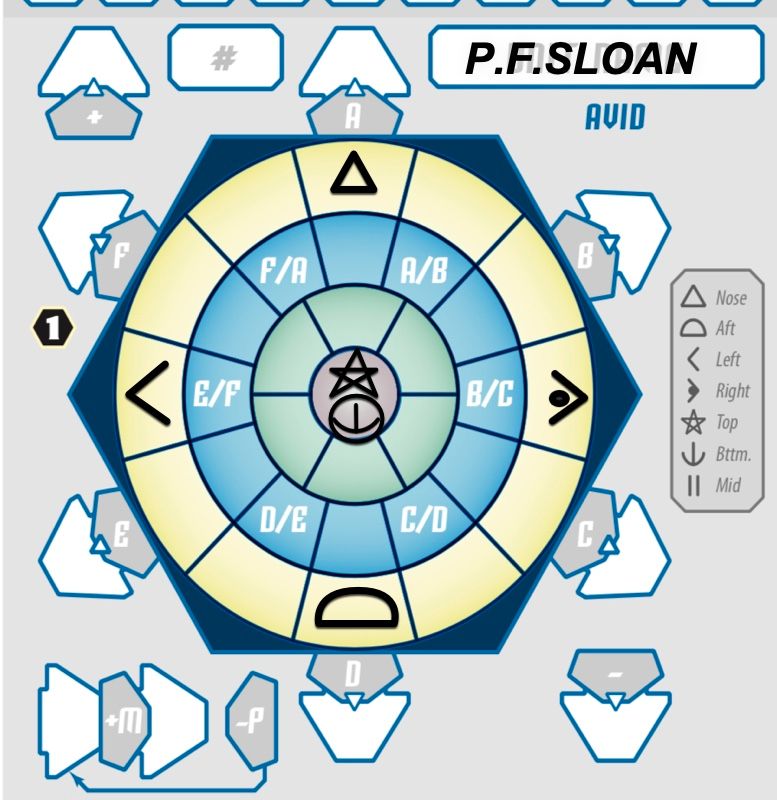
The fore-aft axis is level (both ends are in the amber band) and the ship is not rolled relative to the board either (left and right are also in amber) The ventral end is straight "up" in purple, and the keel is circled (down) in purple. It is not moving relative to the space of the game board (none of the vectors are filled in).
Now let's pivot it 30 degrees toward "B" and roll it 30 degrees counterclockwise (looking forward from the bridge) as well.
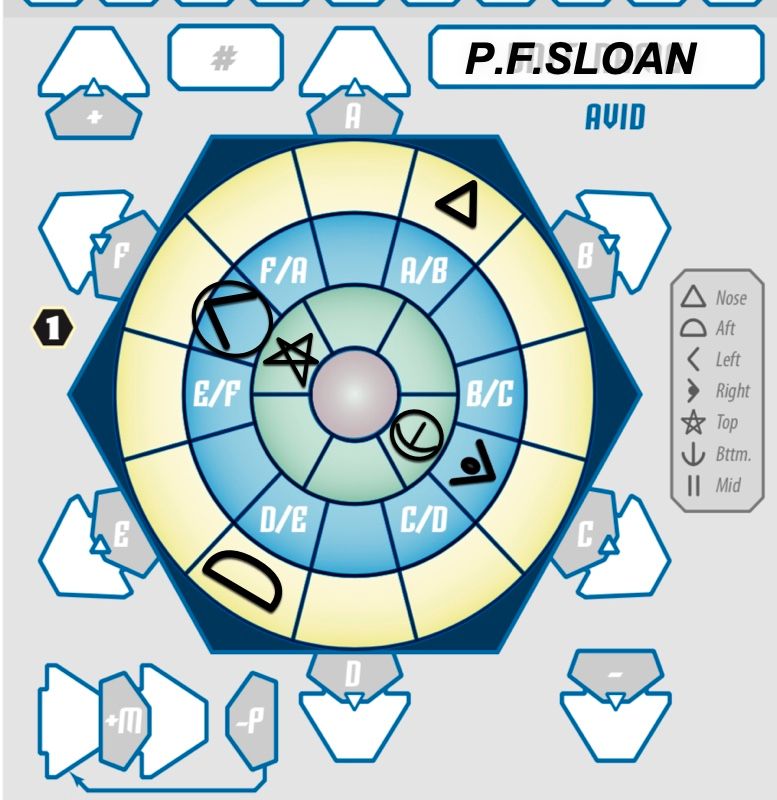
In the game it translates to something like this:
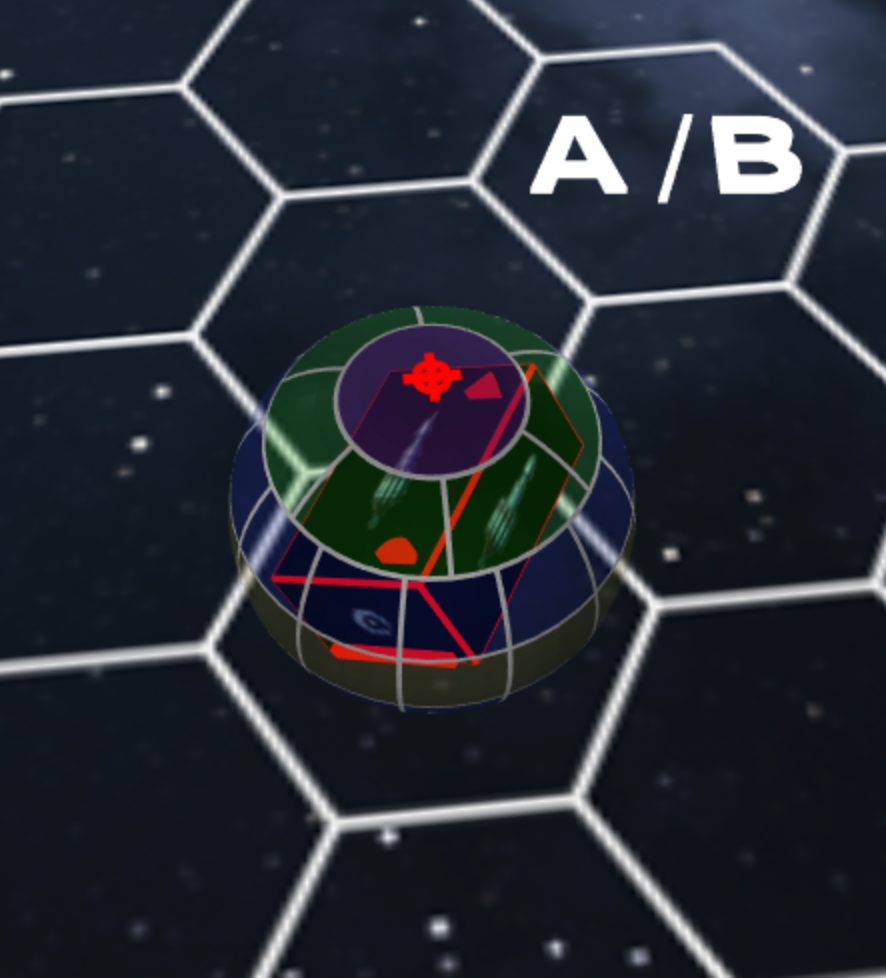
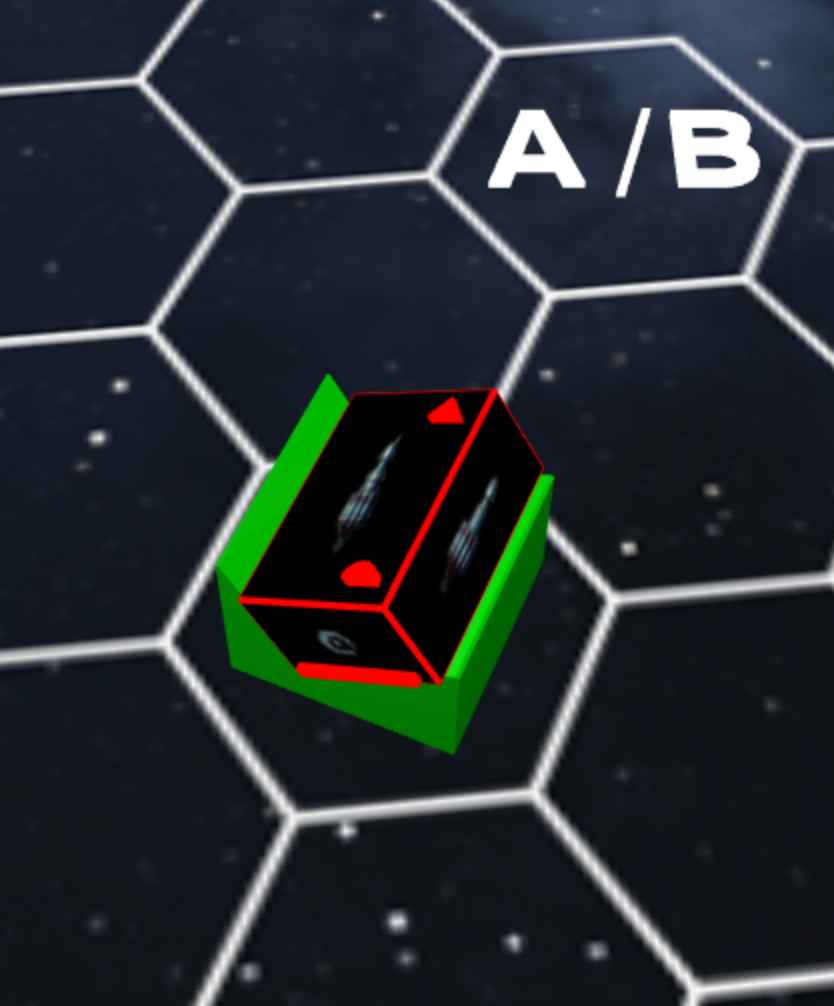
I could of course pitch it up, etc., or have it move 3 hexes in "A" per turn, 1 in "F", and one up "+".
Targeting is a matter of figuring out where the target hex is in the AVID, and then remapping it to the ships view of the sky based on its pitch, roll, etc. to see what weapons can bear. It sounds complicated but is actually straightforward and easy.
A lot of work was put into simplifying this.
It provides a level of systems detail seen in games like SFB or FedCom but makes it far easier to apply damage by leveraging the ship sheets instead of separate tables, without the utter mess that was RL:Interceptor.
The movement is fiddly, but in practice no more so than the simpler-looking movement rules of SFB or FedCom, though not as simple as the 2D Talon or Triplanetary that can leverage 2D to use markers, or literal dry erase markers, to plot vectors.
Again, the true genius of the game is a system that allows you true 3D movement and targeting while, allowing for rounding errors for simplification, letting the player aids handle the math.

